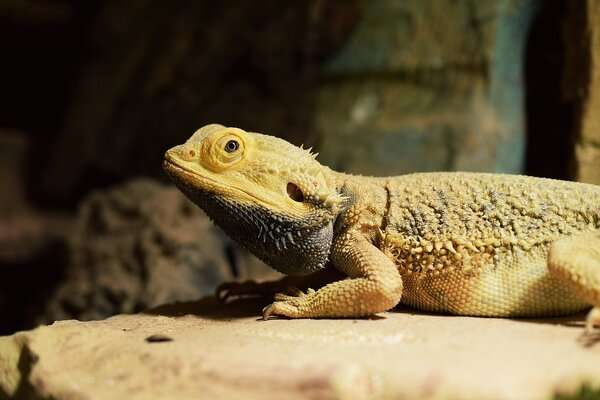Have you ever thought about making a do it yourself vivarium for bearded dragons? Even though bearded dragons have a very pleasant temperament, these reptiles can be challenging to have in your house.
They do have a hardy nature, and for that, they do make a good pet. However, you have to provide them with appropriate conditions to live in. Some commercial options are available, but most people go for a do it yourself vivarium for bearded dragons.
You can repurpose any stock tan and fit a suitable lid on it. Then, add some lights and the appropriate substrate along with some cage furniture. And there you have it, and your do it yourself vivarium for bearded dragons is ready.
However, if it is your first time and you are looking for some guidance, you have come to the right place, scroll down, and read further.
Do It Yourself Vivarium for Bearded Dragons – The Basics
So, what are the basics of making your do it yourself vivarium for bearded dragons? As simple as it may sound, you still have to fulfill some requirements. Choose the best materials to make an appropriate do it yourself vivarium for bearded dragons.
Equine enclosure

These bearded dragons can engage in a pretty healthy activity, and they have a large size. Therefore, you need to provide them with a larger cage. At a minimum, each adult needs anywhere from 4 to 8 square feet of floor space to remain comfortable.
Now, the thing is, vivariums that are this big can be pretty expensive. Moreover, these containers are pretty heavy and fragile too. Hence, you need to make one for yourself.
Stock tanks are best for this purpose because they are pretty large and can be taken seriously too. Plus, you will not have to break your wallet to have them either.
You can go for a stock tank that is 4 feet long and 2 feet wide, and it can conveniently house a pair of bearded dragons. But if you have three dragons, you will need to go for a 6 feet long stock tank.
You might find that these stock tanks are not that attractive to look at. But you can make them look good by creatively decorating them from the outside.
If you do not have access to these stock tanks, you can always make a cage using different materials. You can go for wood, glass, and plastic. Wood is always a cheaper alternative to glass and plastic, but it is heavy. Plastic is always waterproof, but it is expensive. Glass allows plenty of visibility, but it is fragile.
There are not many retailers that stock plastic or glass. Therefore, most DIYers go for wood. But you will have to seal your wood cage using non-toxic epoxy or polyurethane to prevent the wood from rotting.
You can cover the holes and cut for ventilation or heating and lighting fixtures. You can use metal mesh or aluminum screens to cover these holes. If your dragon can access these areas, make sure that you should go for plastic-coated or soft materials so it might not end up injuring itself.
Size of the cage
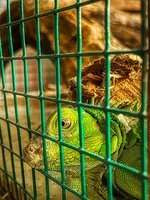
As mentioned above, these dragons need larger cages. You can only go for the right one based on the size of your dragon and fire that you will have to build one yourself. Adult bearded dragons need eight square feet of area. But they can use as much space as you provide them.
Make sure to establish a thermal gradient within your cage so they can access different temperature ranges within the cage. Therefore, you need to go for a longer cage and not a wider one. The ideal dimensions for a bearded dragon cage are 4 feet long, 2 feet deep, and one to two feet tall.
Laying the lid down
The next step is to lay down the lid on the stock tank. Though your dragon will not climb out of the trough, you can still prevent any unauthorized hands.
This lid will also help in preventing the heat from escaping the tank. You can use solid wood to make this lid, or that lid can be made of plastic. The choice is up to you. However, you can make a frame and a screen lid too.
But make sure that this lid ensures proper ventilation in the cage. In most cases, the best way to suspend the lighting and heating fixtures into the cage is to cut out a few sections in the lid and cover the holes using metal mesh.
From here, the lights will stay right on top of the mesh. You can also make the center of the lid hinge. This way, you can open half of the lid to access the cage. And you will not have to remove the lightbulbs to do so.
Provide them with proper lighting and heating conditions
Out here in the wild, they use the sun to warm up their bodies and absorb UV rays from sunshine. It allows them to metabolize the dietary calcium in their bodies.
But in captivity, you have to provide them with proper heating and lighting conditions. The news is about suitable UV light and warmth to get their system going. Therefore, use an incandescent bulb and place it in a dome to provide them with heat. You can place this heat source at one end of the tank to provide them with a thermal gradient.
By doing so, you will provide your dragon with the right conditions to cool off or warm up as it wishes. You can adjust the wattage of your bulb till the temperature right under the light ranges between 100F to 110F.
Now, with this basking light, you can place a full-spectrum fluorescent bulb that provides three to ten percent of its light in the UV portion. So, give your pet about 12 hours of light and 12 hours of darkness.
Interior design
Cypress mulch, newspaper, and sand are the best options for you to design the cage’s interior as substrates. But they both have theory pros and cons. Whichever you choose as your substrate, make sure that you clean it daily. This way, you will keep your bearded dragon from falling sick.
These bearded dragons are semi-arboreal, and they prefer flat branches and stacked stones. Therefore, you need to palace these items right under the basking light. Do not go for any toxic or elastic plants because your bearded dragons will try their best to consume them.
Cage climate-controlling
Your bearded dragons need a basking spot. Plus, they will need cooler temperatures to retreat to when they are feeling it too hot. So, place a basking spot at one end of the cage. As a result, you will create a thermal gradient for your dragons. They can conveniently adjust their body temperatures using this gradient.
There are two different ways that you can use to heat the basking spot for your dragons. You can go for heat lamps, or you can choose radiant heat panels.
If you are going for heat amplifiers, you will have to cut large holes within the lid. But if you want to go with heat panels, you should go for a solid lid and attach the panel directly to the ceiling.
No matter what you choose, the basking spot for your dragons must have a temperature ranging from 100F to 110F.
Moreover, your dragons need quality full-spectrum light. You can place the full spectrum lights right over the top lid. But make sure that your dragons can climb up to at least within 12 inches of these lights to ensure adequate UV absorption.
Security, ventilation, and access
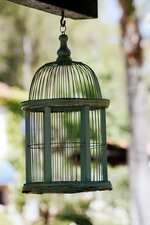
These bearded dragons come from the arid habitats of central Australia. Therefore, they must have a cage with enough ventilation to prevent stagnant conditions or too much high humidity.
Nevertheless, the more ventilation their cage has, the harder it is to maintain proper temperatures. Moreover, it is critical to ensure your dragon cannot escape the cage. Plus, if you have other pets, they do not have access to your dragon’s habitat. Finally, if you have kids in your home, make sure that the cage is locked correctly.
Cages with front openings are much easier to maintain compared to cages that have top-opening. But if you have a hinged top lid, then the maintenance of your dragon cage becomes much simpler too.
Do It Yourself Vivarium for Bearded Dragons – The Process
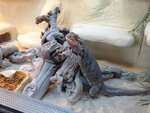
So, what is the process of making your do it yourself vivarium for bearded dragons? Now that you know about the basics, here are some important steps you need to take to make your do it yourself vivarium for bearded dragons.
Tools required
- A wooden box or a container such as an old dresser.
- An insulation board.
- A box cutter.
- Tile grout.
- Spray foam.
- Hinges.
- Acrylic sheets.
- Paint.
Step 1 – Cut the wooden box/container
Go for a box that has at least 4-foot x 2-foot space in it. The height should range from 1 to 2 feet. The volume of this space will be 40 gallons, and you can keep a couple of bearded dragons in this space.
Step 2 – Add insulation board
The next step is to add the insulation board and shape your tank for the dragon. Keep in mind that bearded dragons love climbing. Use the insulation aboard to create a fun area that will keep our pets happy and engaged. With insulation, you will keep the cage warm too.
Step 3 – Cutting the box
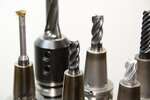
If you are not using the stock tank, you will have to use a box cutter to cut and foam the insulation boards. Make sure to use a cutter with a fresh blade for easy management and high cutting precision.
At this point, you can add spray foam and fill up those cracks and gaps. You can use this spray foam to create those fake-looking but convincing rock-like formations. Again, this is not mandatory, but it will add to the overall look of your cage and its habitat.
Step 4 – Using tile grout and nontoxic paint
You have to use tile grout to cover any insulation or hardened spray foam. Tile grout is going to smooth out the texture and seal all the sides together even further.
Once you are done with the hardened spray foam and insulation, it is time to go for non-toxic paint. It will allow you to unify the entire look of the cage. Also, make sure to go for earth or rock colors to make the cage more realistic.
But if you are looking to go for a fuchsia backdrop, nobody is stopping you from that. But you will need some paint for the exterior of the cage. The pain you use outside the cage doesn’t need to be non-toxic, but the one you use on the inside has to be.
Step 5 – Adding those acrylic sheets and hinges
Now, it is time to add though acrylic sheets and finalize the glass look of your cage. Again, it is highly recommended to go for at least a couple of large acrylic sheets.
It will allow you to look for the font and throw pretty conveniently. Make sure that the sheets are cut according to the dimensions you need or will mess up the shape and looks of your cage.
On the top lid, you can add hinges. Then, you can conveniently move the top and open it with hinges without disturbing the lighting and heating fixtures.
But before you install the lid, remember to make the holes and cover the holes with metal mesh. Now, fix the lid on top of the cage, and you are all done.
FAQs
Is it easy to make a do it yourself vivarium for bearded dragons, or should I buy one?
Making a do it yourself vivarium for bearded dragons is not that difficult if you have a little DIY experience. But going for a commercial option can prove to be very expensive.
Therefore, as a low-budget option, you can consider going for a do it yourself vivarium for bearded dragons and make one according to your preferences.
What is the right size of a vivarium for bearded dragons?
Based on their size and their level of activity, these bearded dragons need at least an area of 4 feet x 2 feet. A cage of this size can conveniently hold a couple of dragons. However, if you hold a trio, you should go for a 6 feet x 2 feet cage.
How do you make a basking spot for your bearded dragons?
You can place an object where your dragons can perch in a basking area. You can use driftwood, tree limbs, stone, and rocks. Your dragons will love to spend time in this area. But make sure that this area is free from any chemicals, insects, mold, and mildew.
Final Word
Making a do it yourself vivarium for bearded dragons is not that difficult, right? But it can certainly save you a few bucks. It is because commercially available vivariums do not come cheap.
You can customize a design according to your preferences and make a larger one without spending more money. Just make sure you provide your dragons with a proper basking area and conditions close to their natural habitat.

